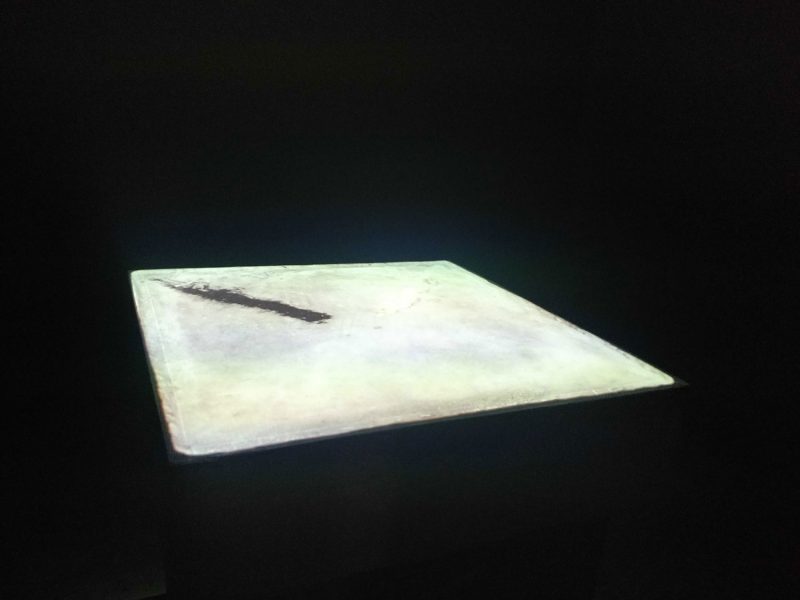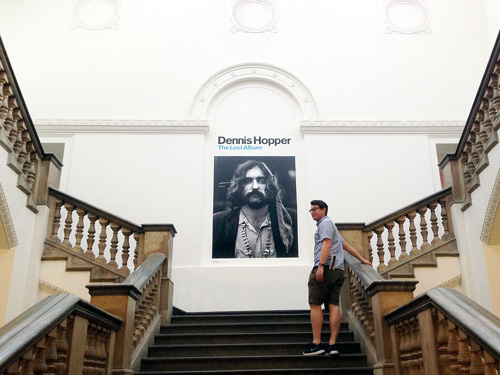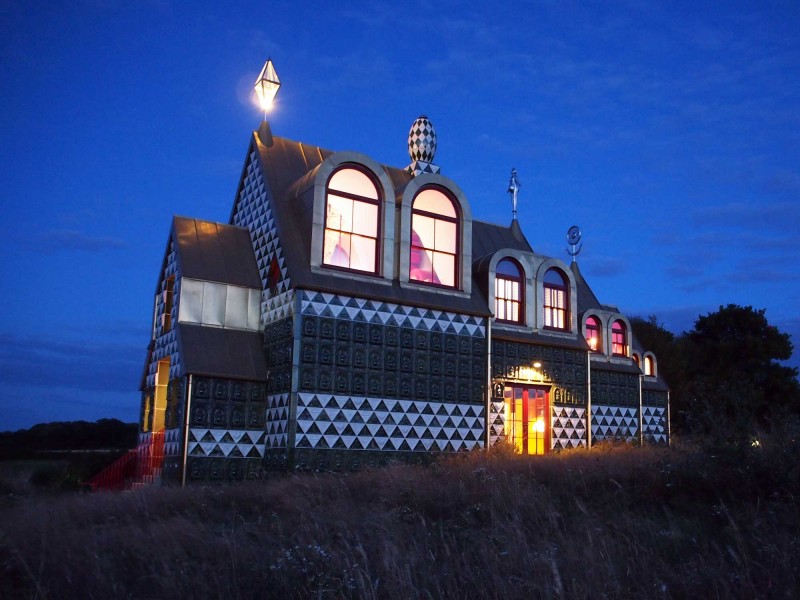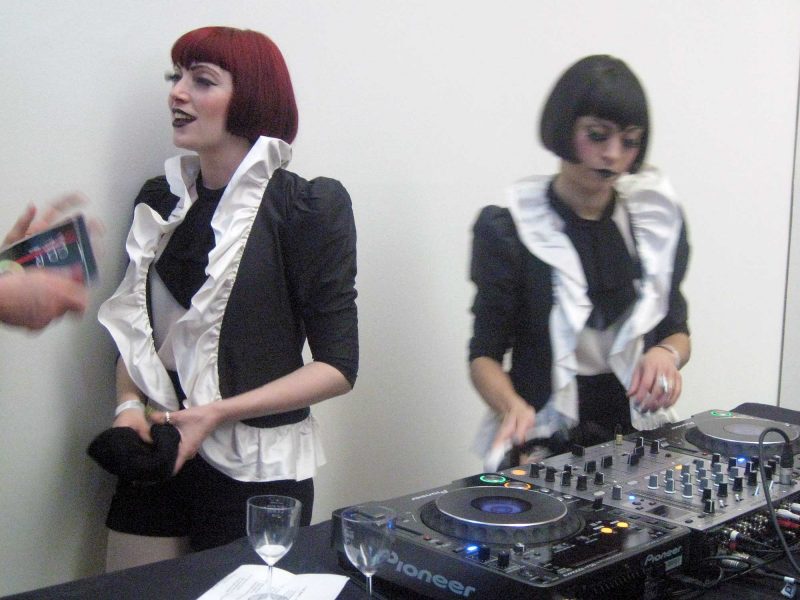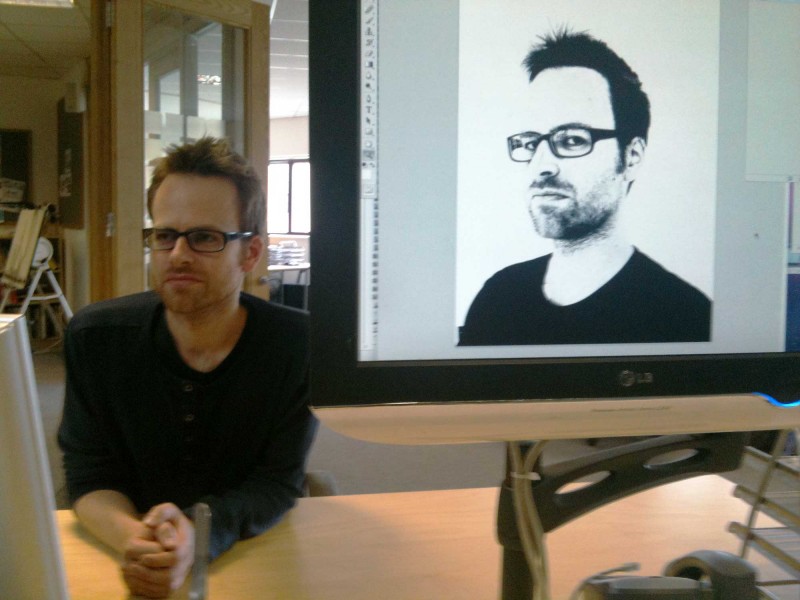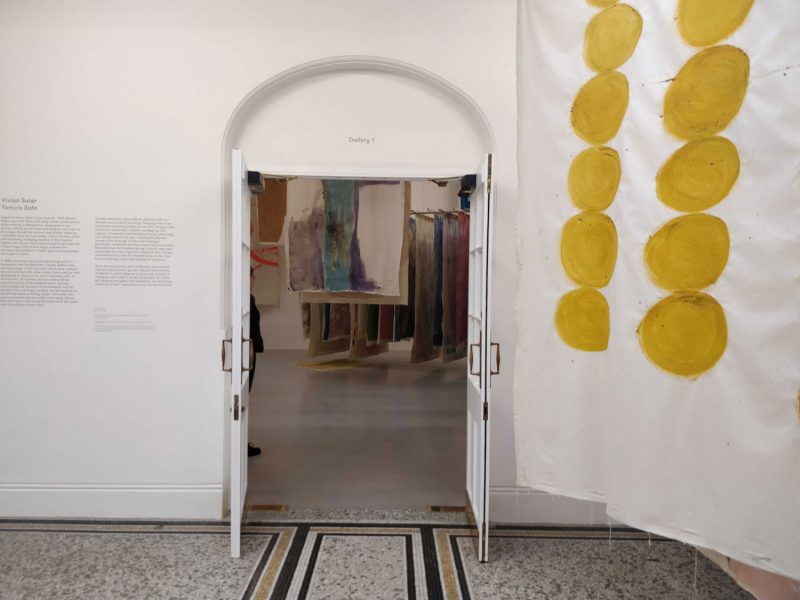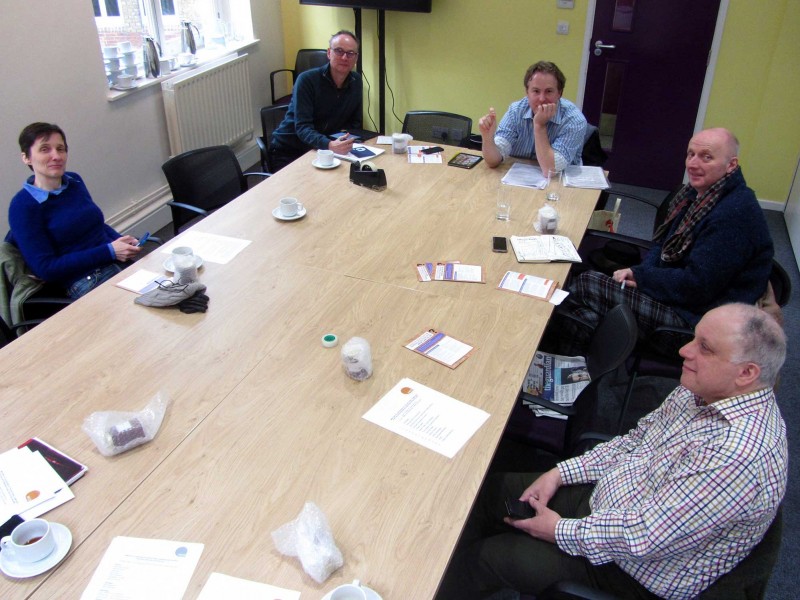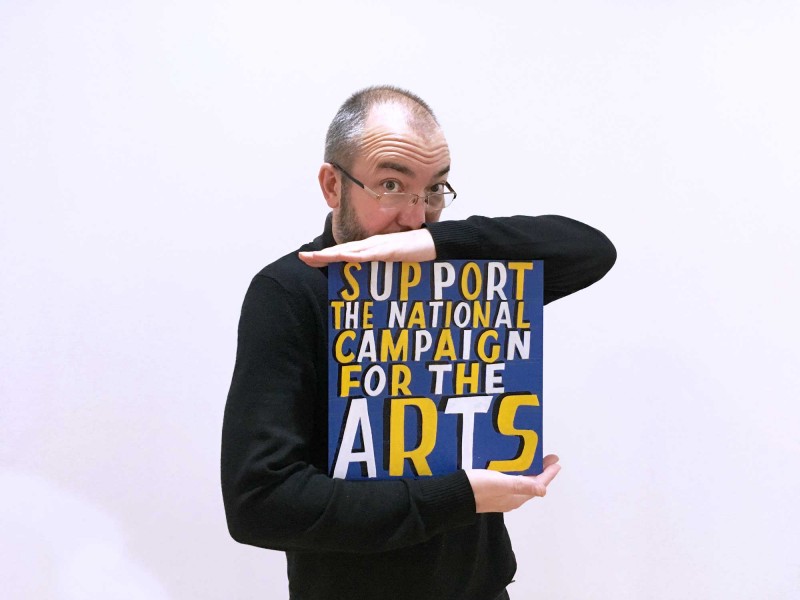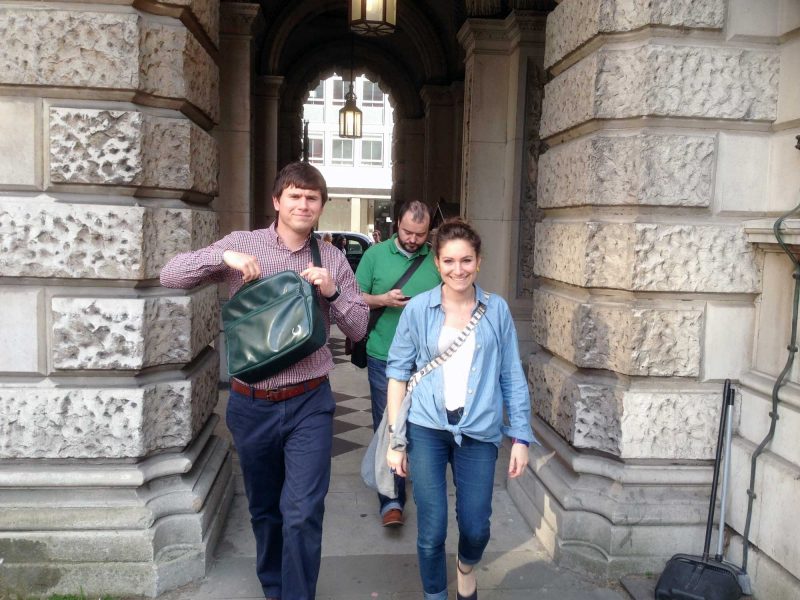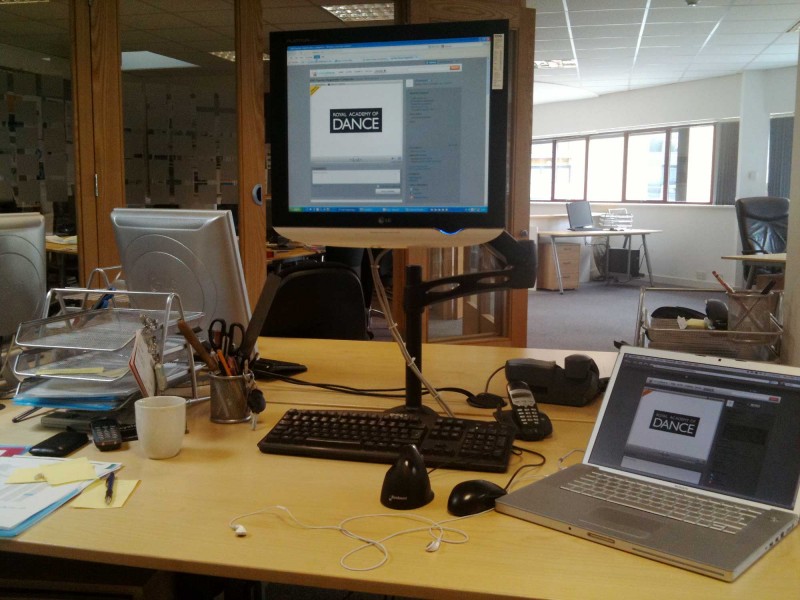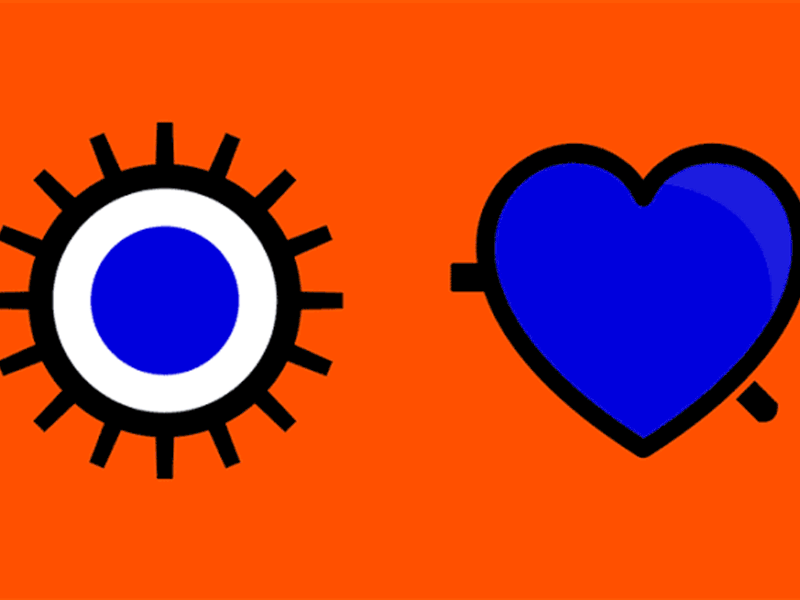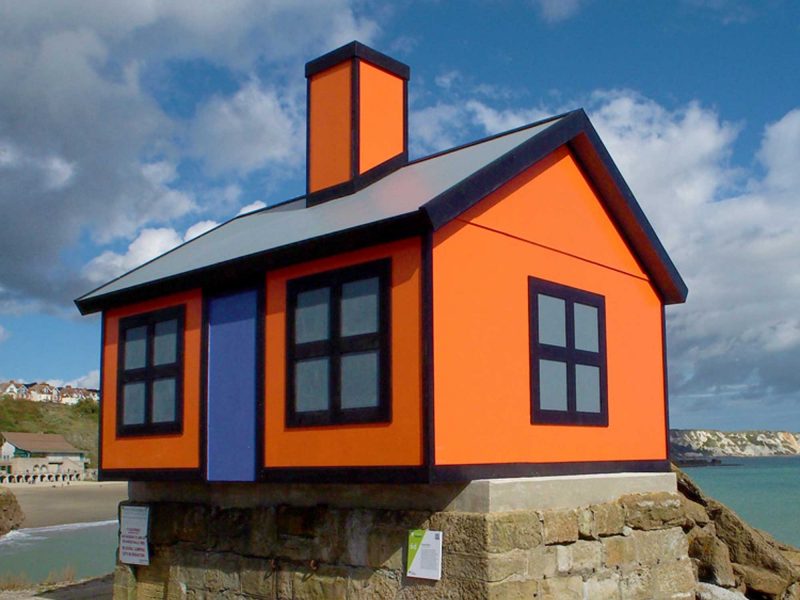Ed shares his thoughts on one of January’s must-see exhibitions at the Royal Academy.
Lucian Freud: The Self-portraits at Royal Academy
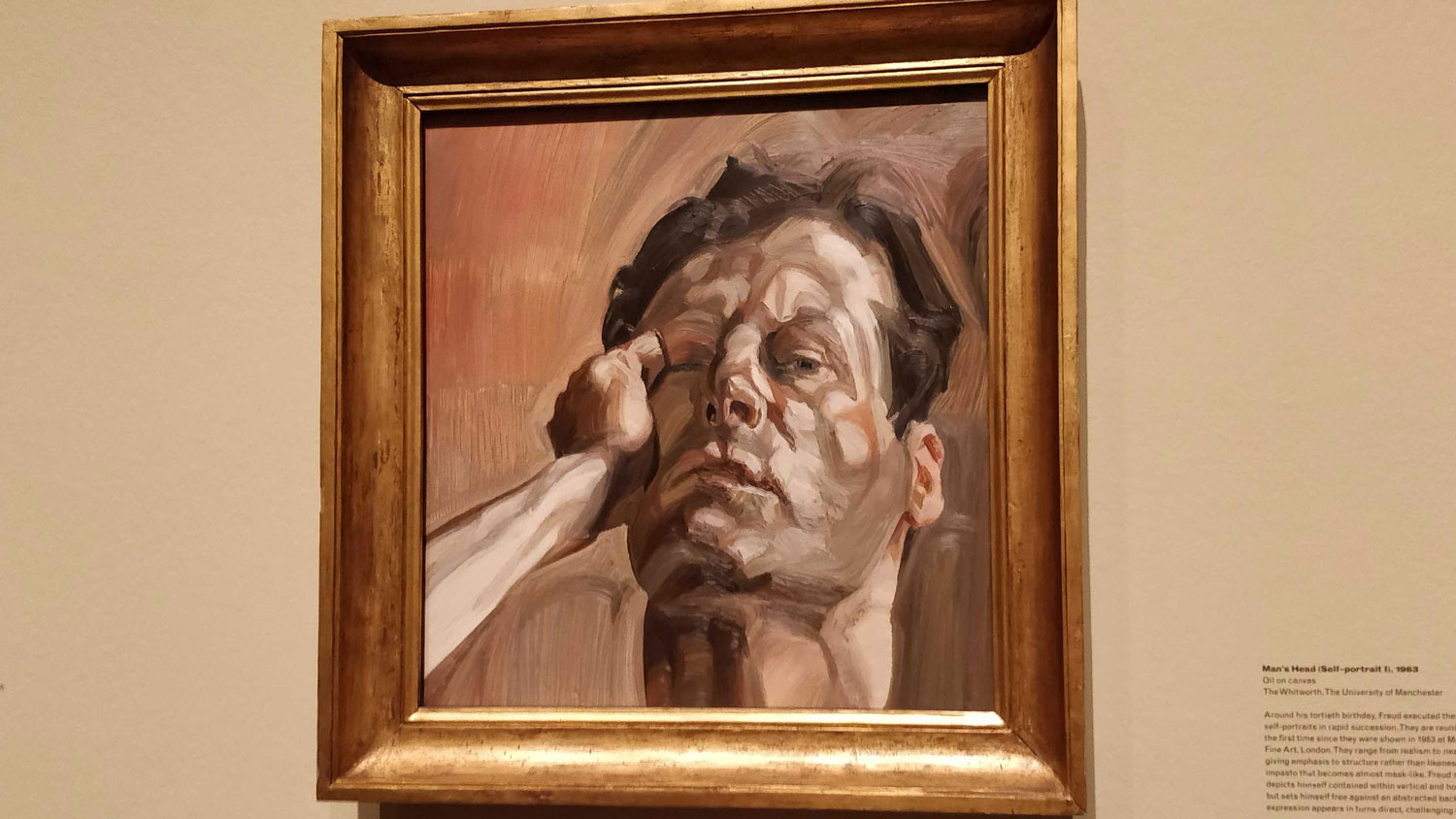
I’ve recently finished reading Martin Gayford’s excellent book Modernists and Mavericks – a collective biography of the luminaries of the post-war art scene in London. It’s thoroughly researched and very well-written; a real hallmark of good non-fiction writing. I’d highly recommend it.
Lucian Freud looms large in Gayford’s book, so it was a stroke of luck that around the same time I was reading Modernists and Mavericks, the Royal Academy were putting on a thorough exhibition of Freud’s self portraits, bringing together fifty works (many from private collections), that map his artistic career through the lens of his self-portraits.
The exhibition’s five rooms break down Freud’s self-portraiture chronologically – a curatorial decision that really emphasises the evolution of his style.
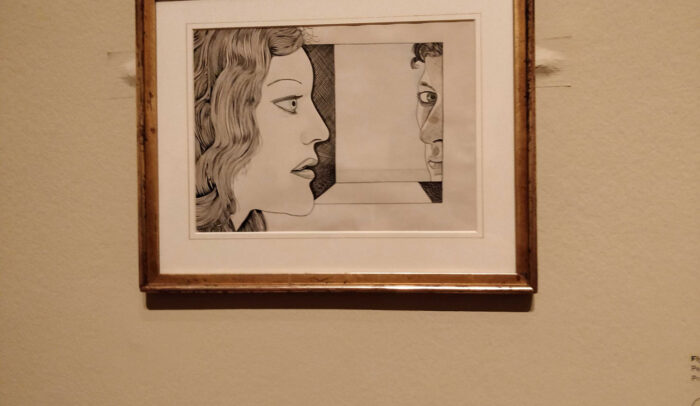
Freud being Freudian
To be honest, his earlier work didn’t do a lot for me. It was largely drawing or print making, often highly illustrative, and suggestively surrealist. However these rooms did establish the anxious, introspective psychological state that was prominent in much of the work. To put it simply a lot of Freud’s self-portraiture is, well, Freudian. By all accounts Lucian Freud was keen to play down his connection to Sigmund Freud, his grandfather (I don’t blame him to be honest, Sigmund’s a bit creepy). But the psychologist/philosopher’s ideas, particularly about the divided self and familial relationships, worm their way into every part of Lucian Freud’s career.
The exhibition really comes into its own when Freud starts painting.
Although he’s probably most well known for his uncompromising, fleshy portraiture, where paint is applied like butter, one of the most striking paintings was an early 1949 painting in muted tones.
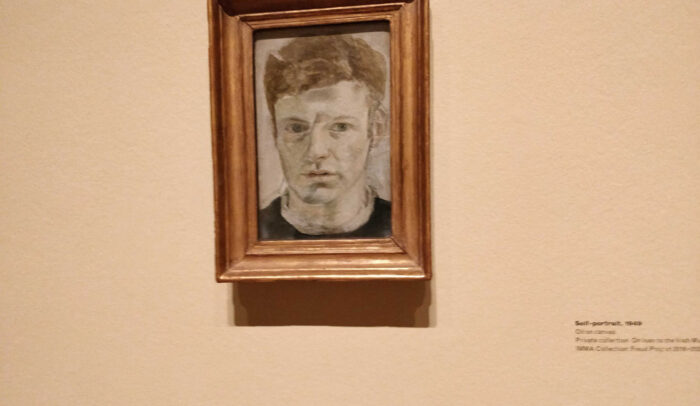
As you can see, Freud’s often not very flattering to himself in his own work, often fixing the viewer with a hard stare worthy of Paddington.
For me, the most compelling moments of the exhibition were those where Freud seemed to be exploring the capacity of paint, as a medium, to render his own likeness.
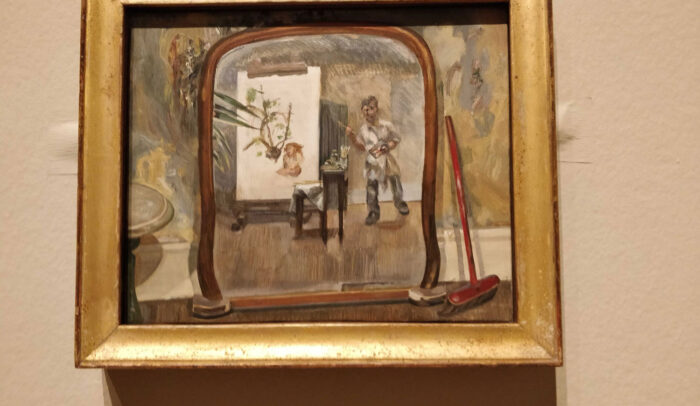
Small Interior (1968-72)
The wonderful ‘Small Interior’ (1968-72) plays games with mirrors, space, and paint. Freud stands, squatly, in the middle of the canvas, holding a messy palette which has infected the whole room with its muted tones, or exploratory marks like those to the left of the mirror. A painter painting themselves painting in a paint-spattered room really is turtles all the way down, isn’t it?
This line of enquiry takes on its own grandeur in the exhibition’s final room, of later work.
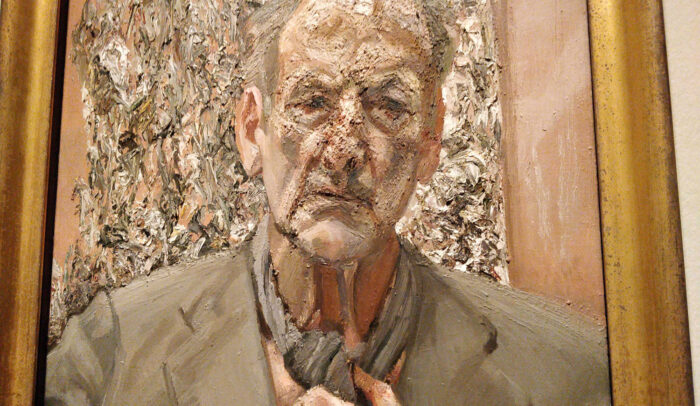
‘Self Portrait, Reflection’ (2002) sees the artist emerging from a field of tertiary abstraction. The similarity between the plasticity of the paint that constitutes Freud’s face here, and the brushstrokes on the wall behind him, elegantly highlight’s the painting’s own constructedness and says something of the circularity of self-portraiture as a discipline.
In the intimate rooms of the RA’s Sackler wing, this incisively curated exhibition was a real pleasure. I suggest you book because, by the time you read this, it’s likely the exhibition will have already closed. Otherwise you’ll just have to take my word for it.


